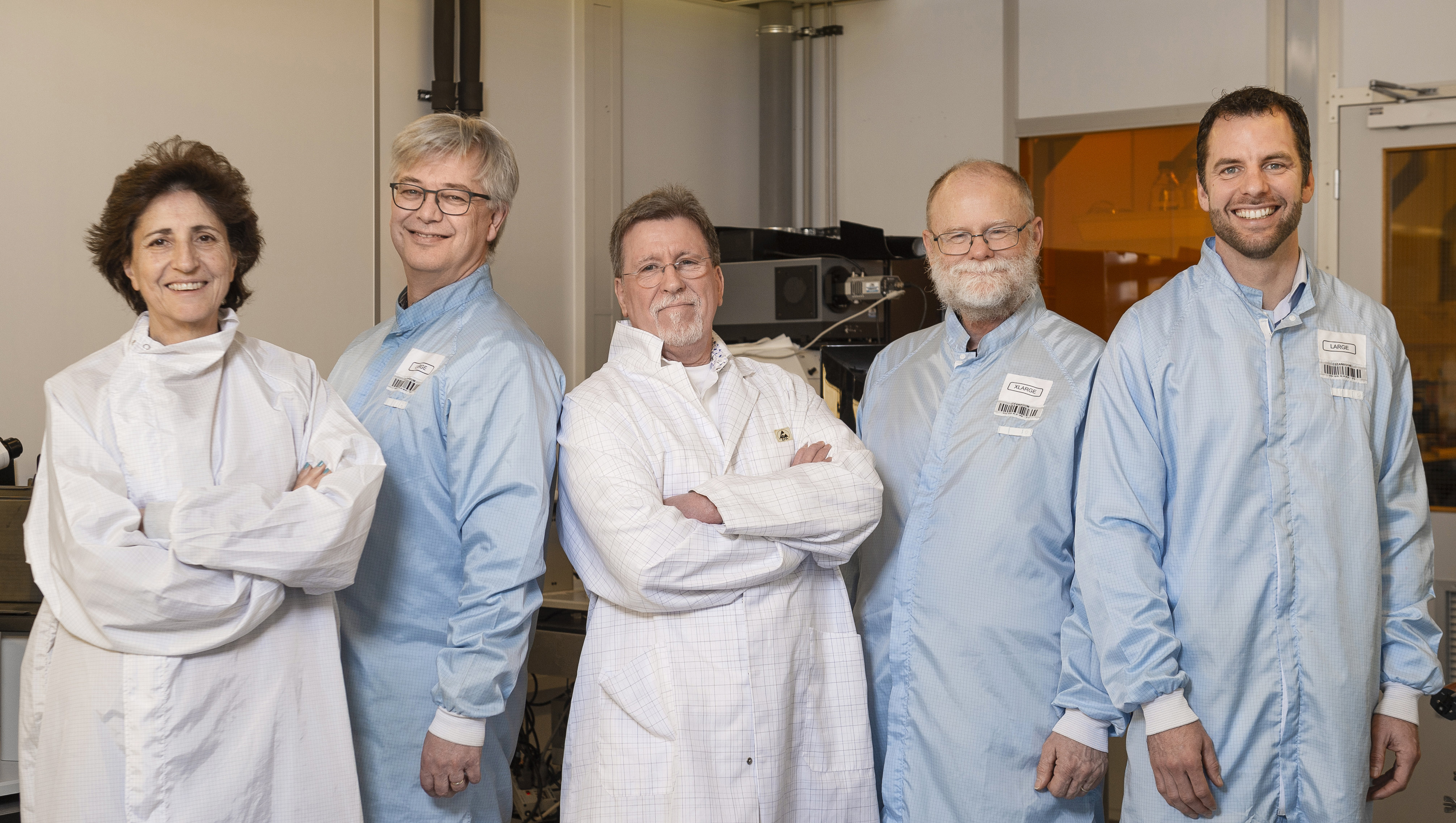Else Kooi Lab welcomes Applied Nanolayers

Flexible, transparent and an extremely good conductor of electricity and heat. Just three interesting properties of graphene, a two-dimensional layer of carbon with unlimited possibilities. To further develop methods of producing this so-called wonder-material, the Else Kooi Lab has recently joined forces with Applied Nanolayers (ANL), a two-dimensial materials (2DM) company which has been working with graphene for years. “Obviously, thinking about and even making the first device concept is fine,” says Paul Hedges, CEO of ANL. “But things only become really interesting when such great ideas find their way to the market in real volume. And for 2D devices that’s possible in Delft.”
Hedges’ ambitions tie in seamlessly with those of the Else Kooi Lab (EKL), TU Delft’s micromanufacturing laboratory, confirms its director, Casper Juffermans. “The Else Kooi Lab builds bridges between scientists and industry. For example, we are working on the development of organ-on-a-chip technology and micro-electromechanical systems. This is how we at the laboratory help translate innovative concepts into actual products with market potential. In this way, we hope to make an important contribution to industrial innovation. Our new collaboration with Applied Nanolayers is a big step towards achieving that aim.”
Quality boost
To make graphene viable commercially, a reliable production process is required. Only then, will the material be reproducible at a high enough quality – without holes or contamination, and with homogeneous properties – and relatively cheaply. It is also essential that the integration of graphene into an existing production process be brought sufficiently under control. To achieve this, Applied Nanolayers developed the full end-to-end capability to grow and transfer high-quality graphene onto 200 mm wafers: creating thin building blocks for the next generation integrated devices being developed in Delft and elsewhere.
Warm welcome
At TU Delft, the collaboration is enthusiastically received. “We are very pleased that ANL has found a landing place in our clean room,” says John Schmitz, Dean of the Faculty of Electrical Engineering, Mathematics and Computer Science. “In this way several TU Delft research groups can explore graphene, that is manufactured in an industrial fashion, on new advanced devices and applications and bring ground breaking results quickly to the market place.”
An opportunity that is also welcomed by Lina Sarro who is Professor in Microsystems Technology: “Graphene layers of the highest quality are extremely attractive to implement in new devices and sensing functionalities. My colleague Sten Vollebregt already works closely with ANL in this area. In the coming years, this cooperation will only become stronger.”
Nobel Prize
Graphene and other two-dimensional materials have long been a source of inspiration for researchers trying to devise new devices and applications. For the simple way in which they managed to produce graphene, André Geim and Konstantin Novoselov were awarded the 2010 Nobel Prize for Physics. “Geim and Novoselov used sellotape to detach a layer of carbon atoms from a block of graphite. Since then, the development of graphene devices has progressed rapidly. The next step is to fuse these many dreams into an industrial reality – this is why we are at the Delft University of Technology.”